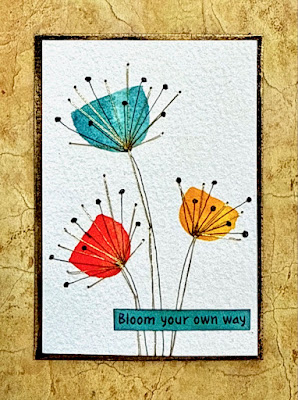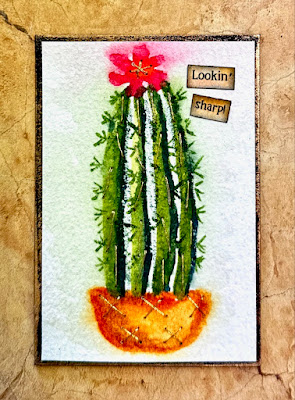This technique uses the gel prints that we made in the last class, Small Texture Gel Prints. Tearing the pieces of gel print into small pieces and layering them, you can create wonderful landscape designs that are then further highlighted with the use of hand stitching with metallic threads to hold it all in place. An alternative is to use a sewing machine to stitch the papers down. I have done both in the samples below. These are all created on 200gsm Baohong watercolour paper that has the sky area painted before layering the papers. Such a satisfying technique, and it's a great use of gel prints, but could also be done by using plain and small patterned papers. For the first time, I'm using no quotes or words on these as I want the landscapes to speak for themselves; however, I had to call them something so each has a name as a description.
Red Sky
(Here's a good trick to get that perfect moon on
watercolour. Wrap a 5c piece (approx dime size)
with a tissue and while the sky is still wet, press
the tissue-wrapped coin into the sky.
It will leave the perfect moon shape.)

Barren Hills

(In the Philippines, there is an area with hills that turn
brown when the green dies off. They
are called Chocolate Hills. This reminded
me of the pictures that I'd seen of them.)






































.jpg)





.jpg)







